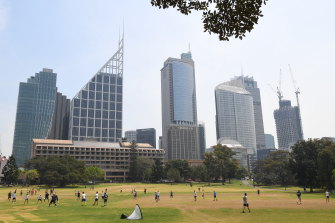When COVID-19 sent Australia into lockdown, the property industry was driven to act in a way that was faster and more agile than ever before.
Almost overnight, Australia’s largest landlords were faced with vacant assets as much of the workforce stayed home and the property industry took giant leaps towards a seamless and connected approach to modern building management.
Cloud-based analytics and fact-based communication suddenly took centre stage as stakeholders began implementing partial or full shutdowns, slashing operating costs and shifting their focus to tenant and customer wellbeing.

Tenant-landlord relationships have been tested but a data-driven approach to asset management will help restore this.Credit:Peter Braig
Co-operation, communication and agility have emerged as the common attributes differentiating successful companies from the pack. Tenant-landlord relationships have been tested but a data-driven approach to asset management will help restore this and assist landlords to address tenant wellbeing and connectivity demands faster in a post-COVID world.
At the crux of the challenge is the need for transformation from a traditional to a modern building management approach. McKinsey & Company outline a number of steps real estate leaders rushed to implement in order to improve the viability and longevity of their assets.
Top among them are adopting technology solutions and digitising assets, as well as prioritising healthy buildings.
Tenant-landlord relationships have been tested but a data-driven approach to asset management will help restore this.
One of Australia’s leading real estate investment trusts, the GPT Group, used data to ensure energy wastage was minimised and high levels of indoor air quality were prioritised.
At their flagship retail asset, Melbourne Central, GPT Group optimised operations to reduce energy consumption by more than 50 per cent while ensuring critical infrastructure and tenancies such as grocery stores remained open, safe and comfortable.






